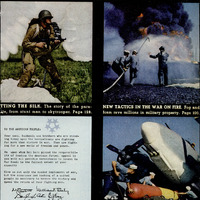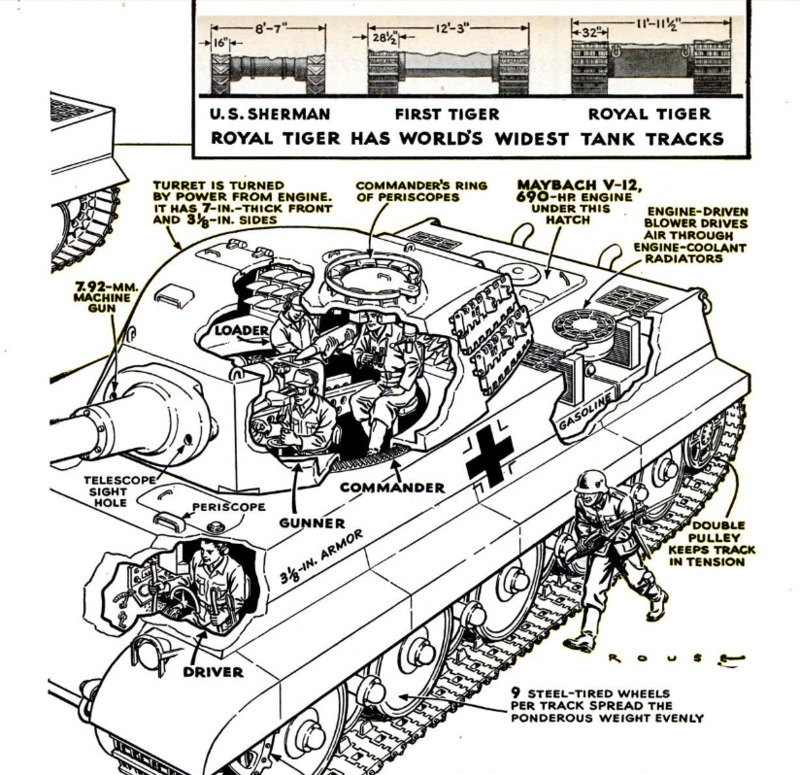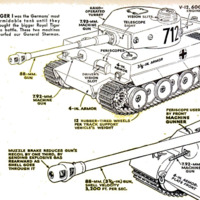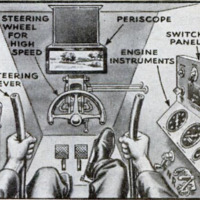Under the tiger's skin
Item
-
Title (Dublin Core)
-
Under the tiger's skin
-
Article Title and/or Image Caption (Dublin Core)
-
Under the tiger's skin
-
extracted text (Extract Text)
-
NOW we can fully understand why GI
tank men “griped” about the General
Sherman medium tank when they had to
pit their weapon against the German Royal
Tiger in their sweep through France and
western and southern Germany. Stewart
Rouse, POPULAR SCIENCE staff artist, visited
the Army's Aberdeen Proving Ground in
Maryland, where he inspected both the 60-
ton Tiger and the T5-ton Royal Tiger,
brought over here for study by American
tank experts. His drawings emphasize the
massiveness of these steel monsters, and
high-light the salient qualities of the slug-
ging heavyweights.
The Royal Tiger—not a big brother to
the Tiger, but more an enlargement of the
Wehrmacht’s 45-ton Panther—is equipped
with 32-inch tracks, the widest tank tracks
in the world, which gave it better flotation
over the muddy terrain of the battlefield.
Its firepower consists of one 88-mm. gun
with a shell velocity of 3,200 feet per second
and two 7.92-mm. machine guns. Powered
by a 690-horsepower engine and manned by
a crew of five, the Royal could thunder over
the countryside at a top speed of 24 miles
an hour. It is protected by frontal armor
from six to 12 inches thick and 3 1/8-inch
armor on the sides. Its power-turned turret
has seven-inch-thick armor in the front and
3 1/8-inch armor on the sides.
Water barriers up to six feet deep were
mere puddles to the nine-foot, six-inch Royal
Tiger, its watertight body permitting it to
run on the bottom of a stream without
stalling. Also, its more than 23-foot length
allowed it to bridge ditches without top-
pling in.
But the sheer weight of the Royal Tiger
led to its downfall. The Nazis had to sacri-
fice speed and maneuverability for protec-
tion and firepower. The more vulnerable
Allied tanks, with their speed, maneuvera-
bility, and superiority in mechanical quali-
ties and number, were able to punch and
keep punching, piling up the blows that
were to knock out their giant opponent.
-
Contributor (Dublin Core)
-
Stewart Rouse (Illustrator)
-
Language (Dublin Core)
-
eng
-
Date Issued (Dublin Core)
-
1945 - 06
-
pages (Bibliographic Ontology)
-
68-69
-
Rights (Dublin Core)
-
Public domain
-
Archived by (Dublin Core)
-
Sami Akbiyik
-
Marco Bortolami (editor)
 Popular Science Monthly, v. 146, n. 6, 1945
Popular Science Monthly, v. 146, n. 6, 1945






